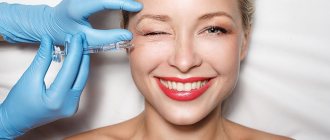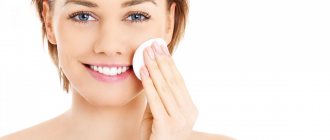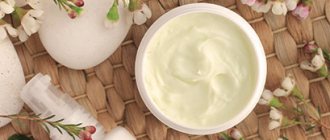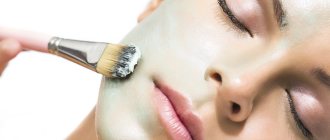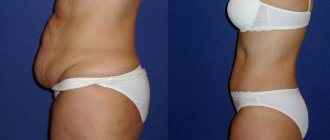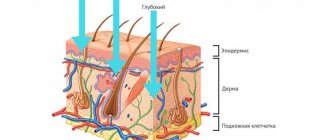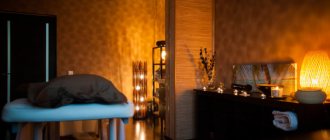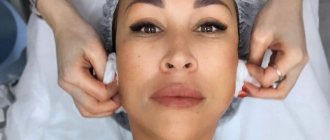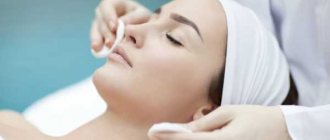After exfoliation in the salon, the cosmetologist gives the client a number of recommendations about whether after peeling it is possible to go to the bathhouse or to the gym, which cosmetics are best to use, how to care for the face, and others. How conscientiously these tips are followed will directly determine how well the effect will manifest itself and how long it will last.
There is a general list of recommendations from beauty salon masters for clients who have undergone an exfoliation procedure. But to this list of tips, items specific to different types of exfoliation will definitely be added. The more the skin is injured, the longer and more carefully it will need to be cared for. A woman’s body characteristics play a major role in the duration of rehabilitation: age, skin type, general condition of the body, metabolic characteristics.
What happens to your skin after peeling?
If you are interested in the question of whether it is possible to visit a bathhouse after facial peeling, then think about how this will affect injured skin? What effect will elevated temperature and profuse sweating have on her?
If you evaluate the condition of a woman’s skin after exfoliation, then an analogy with a burn is appropriate. Moreover, the stronger the concentration and depth of penetration of the exfoliant, the greater the trauma to the skin. Peeling is a serious stress for the body, requiring a period of rehabilitation to restore the integrity of the damaged skin.
Interesting: the first peel using salicylic acid and resorcinol was done in Germany at the end of the 19th century.
During the exfoliation process, the active components destroy the fibers of the epidermis, which die and flake off from the surface of the epidermis. In their place, a layer of new cells is formed, characterized by firmness and elasticity. Through a woman's eyes it looks very unpleasant. Redness, inflammation and swelling are replaced by profuse peeling of the skin.
The main thing at this difficult moment is to allow the body to restore the damaged area without interfering with the natural process. Follow the recommendations of cosmetologists, use only approved products. If you do not follow the advice, you take upon yourself all the side effects and complications of the post-peeling condition.
Is it possible to go to the bathhouse and play sports after peeling?
If you have exfoliated in a beauty salon, remember an important rule: a bath after peeling is taboo. For the next 48-72 hours after exfoliation of any kind, the skin should not be exposed to elevated temperatures and steam. Not only the traditional Russian steam room is prohibited, but also the Finnish sauna, Turkish hammam, phyto-barrel and other analogues.
Many women are interested in the question “Is it possible to go to the sauna after peeling and why?” In a sauna, as in a bathhouse, body temperature rises and sweating intensifies. Particles of the active substance that was used in chemical exfoliation begin to come out of the pores along with the liquid. At the same time, the effect of the procedure is noticeably reduced. In addition to increased sweating, during a stay in a sauna or bathhouse, a person’s blood vessels dilate and the skin turns red. This process prolongs the hyperemia of the skin for a longer period of time. Therefore, when a patient asks a cosmetologist, “Is it possible to go to the steam room or bathhouse after peeling?”, the specialists answer with a firm “no.”
A specialist in outdoor activities will give approximately the same recommendations. Can I exercise after peeling? You will hear an unequivocal “no!” from experts. Active sports also provoke sweating and redness of the surface layer of the skin. This interferes with the normal process of restoration of the epidermis after injury. During the rehabilitation period, I need to refrain from baths and fitness.
Now you know the answer to the question: “Can I take a bath or go to the gym after peeling?” To quickly restore the skin and consolidate a good result, these activities should be abandoned. Spicy foods and alcohol, which cause vasodilation, are also prohibited.
What are the advantages?
Carbon peeling includes the effect of photorejuvenation and laser action. The main highlight of this technique is a cosmetic nanogel that penetrates deep into the layers of the skin, binds dead epidermal cells and removes sebum and dirt. Exposure to a laser beam helps destroy dead cells, destroys bacteria and has a beneficial effect on the production of elastin and collagen.
The main advantages of this method are:
- Absence of any discomfort. The procedure is completely painless. During the session, the client only feels heat from the laser beam.
- Versatility. The service is suitable for owners of any skin type and allows you to cope with several problems at once in one session.
- No inflammation. Most women are afraid of facial cleansing due to severe redness after the procedure. Carbon cleansing has an anti-inflammatory effect, which makes it possible not to cancel your business for that day.
- A complex approach. In just one session, you can solve several problems with the condition of the dermis, which is an undeniable advantage of this method.
- No recovery period. After the session, no additional days are needed to restore the epidermis. It is enough to use the right care, which will help your skin to be in perfect condition.
- The result lasts for a long period of time. The effect of the procedure can please its owner after the first time and last up to a year or more. It all depends on the condition of the dermis and the regularity of home care.
General recommendations from cosmetologists
At the end of the exfoliation procedure, women have hundreds of questions swarming in their heads: from “Can I wash my face after peeling?” to “When will it be possible to go outside?” The salon master will definitely give a number of tips to consolidate the results of the impact and avoid negative consequences.
There are general recommendations after peeling from cosmetologists that are considered universal. They are relevant after exfoliation of any type and depth.
During the first 12 hours after the procedure:
- It is forbidden to wash your face even with plain water;
- You can't touch your face;
- Do not apply any care products to the epidermis;
- Do not go outside, especially in sunny weather.
What not to do in the first 48-72 hours after a chemical peel:
- Use harsh alkaline products for washing. Prefer gentle gels and foams to them. The cream can be applied only on the third day after exfoliation. The preferred components in the cream are panthenol and lanolin;
- Stay outside for a long time. During this period, the epidermis is just forming. Therefore, it is better to minimize the impact of aggressive environmental factors: sun, high and low temperatures, wind, rain, etc.
The rehabilitation period will continue for the next 2 weeks. At this time, the skin will peel and peel off after the procedure. In its place, new young cells are formed, which will form a refreshed face. To ensure a successful recovery, it is better to adhere to the following tips:
- Use products recommended by a cosmetologist on an individual basis. Do not try new facial care products;
- Do not apply decorative cosmetics to the skin: powder, foundation, highlighter, blush, etc.;
- Do not touch your face with your hands;
- Do not peel off crusts and scales;
- Do not use scrubs and peels;
- Do not sunbathe, use creams with sunscreen;
- Do not take a steam bath or sauna;
- Do not swim in the sea or in reservoirs;
- If the cosmetologist did not give such a recommendation, then avoid using homemade masks.
Many women are interested in the question: “How to exfoliate crusts after peeling?” Cosmetologists strictly prohibit tearing off skin flakes and removing them with scrubs. These crusts should come off on their own. Trauma to the skin can lead to the formation of scars.
Post-procedure care
Another advantage of this service is the absence of a long recovery period and special care recommendations. Unlike other types of cleansing, this type of peeling allows you not to postpone your plans to another day. Immediately after the procedure, the skin condition will be absolutely normal, in rare cases, slight redness may occur.
To achieve the desired result, you should follow a few simple recommendations:
- For the first couple of weeks, you should limit your exposure to direct sunlight. It is recommended to use a cream with sun protection of at least fifty.
- The first day you should not use decorative cosmetics. You only need to wash your face with cosmetic lotion.
- Alcohol-based foundations should be put aside for a while;
- The face should be wiped with the product suggested by the cosmetologist.
Features of skin care after peeling
Exfoliation varies in the quality of the method used and the depth of impact. After any skin injury, rehabilitation follows, which will be longer for deep exfoliation. During this period, the epidermis is most sensitive to any influences from external factors, so their influence must be minimized. You can take a steam bath after peeling only when the skin is completely restored. Each type of exfoliation requires specific skin care.
Surface
Superficial exfoliation is the most gentle. Injury to the skin is minimal. Despite the relative safety of the procedure, the epidermis requires restoration. When can I take a steam bath after retinoic peeling? Elevated temperature and humidity are aggressive factors that can harm injured skin and slow down its recovery.
After superficial peeling, visiting the bathhouse is contraindicated until complete rehabilitation. As a rule, it takes no more than 2 weeks. In addition, the cosmetologist reminds clients that it is strictly forbidden to use exfoliating scrubs, chemical compounds or physical exfoliation methods after facial peeling.
A day after superficial exposure, you can use your usual brand of cosmetics, supplementing it with wound-healing and anti-inflammatory agents. It is necessary to moisturize the epidermis as often as possible and drink up to 2 liters of water daily.
Median
Medium peeling injures the deeper layers of the epidermis and recovery takes a long period of time. Facial care during the rehabilitation process should be delicate and thorough. To the cosmetologist’s question, “Can I go to the bathhouse after a medium-type chemical peel?” you will receive a negative answer.
Until the epidermis is restored layer by layer, all stress factors should be excluded: direct sunlight, high and low air temperatures, spicy foods, alcohol, harsh cosmetics, mechanical irritants.
Skin care should be done using mild cosmetics. You can wash your face only once a day with warm water. Therefore, you should temporarily exclude decorative cosmetics. If swelling and other side effects occur, you should consult a cosmetologist or dermatologist. You cannot self-medicate. All medications used must be prescribed only by a doctor. Deep
During the process of deep exfoliation, the skin suffers serious trauma. A woman is often in a hospital setting, where specialists monitor her health. After this, the cosmetologist gives a number of special recommendations: what to do after facial peeling and what not to do.
The following rules should be followed:
- Take prescribed medications: anabolic steroids, antibiotics, anti-inflammatory medications;
- Do not wash your face with water for 48 hours;
- For care, use only light, gentle cosmetics;
- Constantly and for life use sunscreen cosmetics.
For a long period of up to two months, exfoliated skin should not be exposed to harmful factors. That’s why you can’t go to the bathhouse, play sports, or use a scrub after peeling.
Who is carbon peeling suitable for?
A distinctive feature of laser carbon peeling is its gentle effect. The procedure is indicated even for those who, due to increased sensitivity, cannot do mechanical or chemical peels. In addition, it can be carried out at any time of the year.
Main indications for this type of peeling:
- Fading skin;
- Dull complexion;
- Enlarged pores;
- Pigmentation;
- Post-acne;
- Oily sheen;
- Comedones (without inflammation);
- Uneven surface of the epidermis.
Carbon peeling can be used as preparation for other treatments. This procedure not only exfoliates the surface layer of the epidermis, but also makes the skin more susceptible to all kinds of influences. For example, masks after such laser cleansing will be most effective.
Advantages
- Painless. The treatment is suitable even for sensitive skin - the effect of the laser is completely painless, except for a slight tingling sensation, as if washing with carbonated water;
- Safety. The procedure is non-invasive, the skin is not damaged;
- Solving several problems at once. Cleansing pores, lightening the skin, exfoliating the stratum corneum, regulating the sebaceous glands and generally improving the quality of the skin. Laser photothermolysis additionally stimulates regeneration and provides a rejuvenating effect;
- Rapidity. The procedure takes about 30-60 minutes, a short course is enough. Typically, visible results are observed after five procedures with an interval of 5-7 days, but the number of sessions and the length of the intervals between them may vary depending on various factors (for example, the type and condition of the skin, the presence of defects);
- Versatility. Suitable for any skin and any time of year. The procedure can be recommended to almost everyone. It is enough to take the course once a year to maintain the beauty and health of the skin;
- Lack of special training and rehabilitation. A few hours after visiting the clinic, you can go on a date; post-procedure restrictions are minimal.
This is an excellent alternative to chemical peels, allowing you to quickly tidy up your face.
Carbon laser peeling is suitable for any age. To rejuvenate mature skin and correct age-related changes, it is recommended to combine the procedure with injections. Combinations of procedures for maximum effect are selected by the doctor individually.
Contraindications
- Malignant neoplasms, including those not in the area of influence. Laser procedures are prohibited during radiation or chemotherapy. If there are benign tumors in the treatment area, peeling will also have to be abandoned;
- Diabetes;
- Pregnancy and lactation;
- Allergy, individual intolerance to carbon gel;
- Dermatological diseases, rashes, violations of the integrity of the epidermis, any inflammation in the treatment area;
- Tendency to form keloid scars.
If there are contraindications, you should consult a cosmetologist. In some cases, you will have to abandon the procedure forever, sometimes you need to wait, and sometimes you can complete the course, having first received the go-ahead from the attending physician.
If you have any chronic diseases, it is advisable to inform the cosmetologist about them at a preliminary consultation. It would be a good idea to tell your doctor about the medications you are constantly taking.
What to do if side effects occur?
Following your esthetician's recommendations will help prevent side effects from exfoliation. But what to do if they do appear? It is necessary to immediately contact a specialist to minimize the impact of complications on the skin.
Peeling of the epidermis is considered a normal reaction. It appears on the 2nd day after exfoliation and disappears after a week. To soften and speed up the process, you can use a moisturizer with hyaluronic acid as prescribed by a cosmetologist. On the 3rd day, it is recommended to include shea and grape seed butter in your facial care. They eliminate tightness and prevent scar formation. Before using cosmetics after peeling, consult a cosmetologist to see if this can be done in your situation.
Hyperemia or redness of the epidermis is characteristic of medium and deep exfoliation. It can remain on the face for up to 2 weeks. Therefore, to the question “How many days after peeling can you go to the sauna?” you can answer: until the redness goes away. For the same reason, fitness, stress, spicy food, and alcohol are prohibited. Omega-3 acid supplements will help the body cope with this problem.
Facial swelling after exfoliation may occur in women with thin skin. Products with antioxidants will help get rid of this side effect.
Pimples should not normally appear on the face after exfoliation. Their presence indicates incorrect post-peeling care. With this problem you need to contact a cosmetologist. He will prescribe antibiotics, sebostatic, anti-inflammatory or zinc-containing drugs on an individual basis.
An allergy test, which must be done before exfoliation, will protect you from allergies. During the rehabilitation period, you need to care for your skin with hypoallergenic cosmetics. If dermatitis does occur, the doctor prescribes antihistamines.
Attention! It is forbidden to peel off the resulting crusts; this can lead to infection, the formation of a scar or scar. Aseptic care and wound healing ointments based on panthenol or retinol are needed.
Hyperpigmentation can occur if exfoliation is done in the summer without prepping with kojic and retinoic acids. If spots appear, then discard products with extracts of St. John's wort, lemon, cinnamon, clover, lavender, and bergamot.
